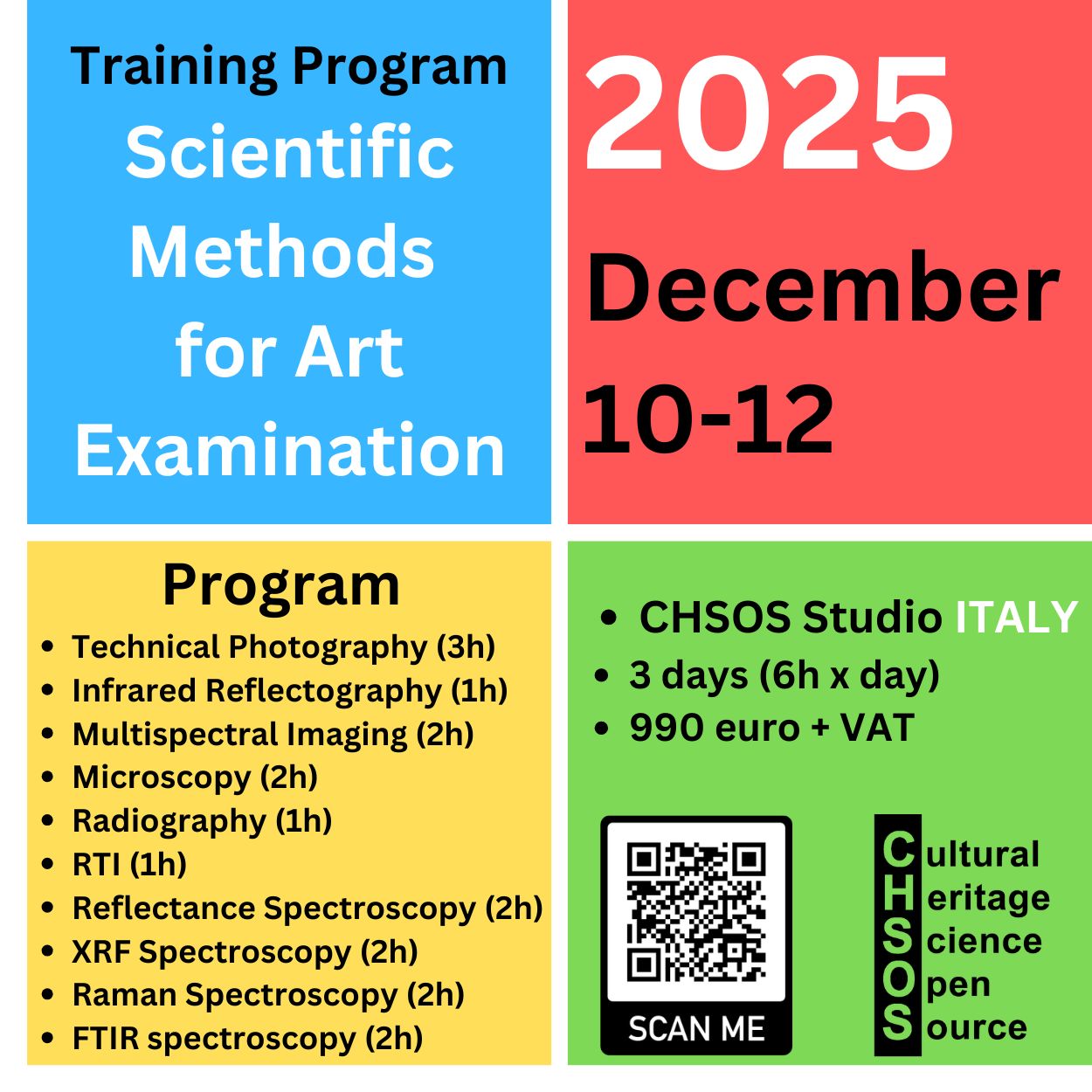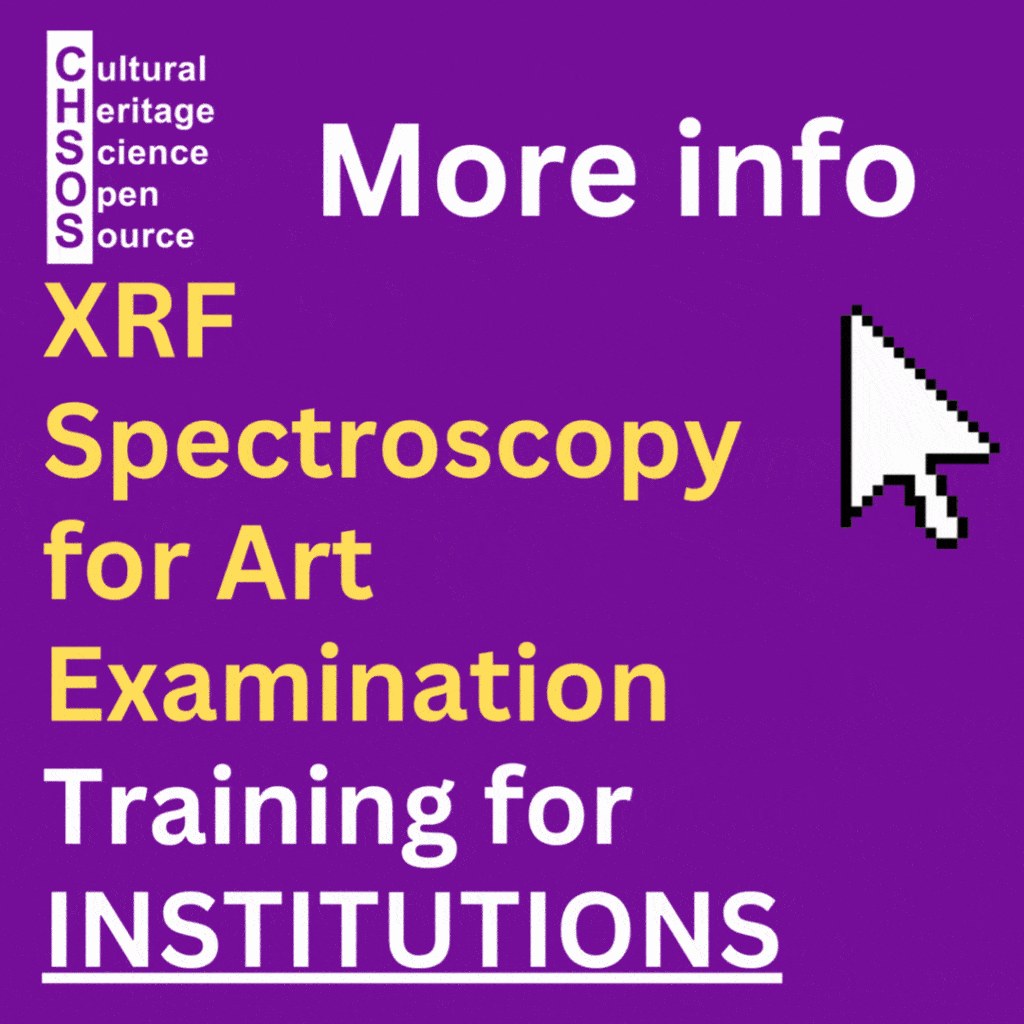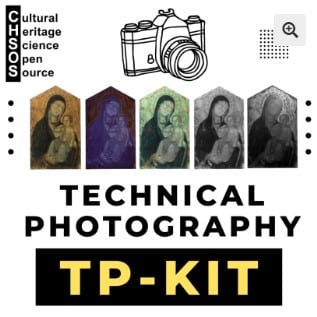Elvira – the Raman Spectrometer for Art Examination
Raman Spectrometer for Art, Elvira. Precise, easy to use, affordable, and packed with accessories for our daily work in technical art examination. This is our best choice for art professionals to start on Raman.
Elvira is part of our family of scientific tools for Art examination. Download our catalog and check out its current cost.

Features
532 nm is the best for Raman beginners
There are several types of Raman spectrometers, and the key distinguishing feature among them is the wavelength of the laser they use. Common Raman systems operate with lasers at 532 nm, 633 nm, 785 nm, and 1064 nm. Each of these wavelengths is better suited for specific analytical tasks, depending on the nature of the material being examined.
In fact, an advanced Raman spectroscopy laboratory rarely relies on a single system. Instead, it often has two, three, or even four different Raman spectrometers, each equipped with a different laser wavelength. This variety ensures maximum flexibility and accuracy.
When it comes to art examination and pigment identification, the laser wavelength plays a critical role. For example, certain pigments respond best to a 532 nm laser, while others yield clearer results with 633 nm or 785 nm systems.
The bottom line is simple: there is no single Raman system that outperforms all others in every situation. This is why we are introducing Elvira, our Raman Spectrometer for Art Examination equipped with a 532 nm laser—the wavelength most likely to provide positive pigment identification when used on its own.
This conclusion is supported by the study Pigments Checker version 3.0: A Handy Set for Conservation Scientists – A Free Online Raman Spectra Database. In this research, pigments from the Pigments Checker were analyzed using three Raman systems (532 nm, 633 nm, and 785 nm). Results showed that the 532 nm Raman consistently delivered the highest rate of successful identifications.
While there is much more to learn about Raman spectroscopy for cultural heritage, we believe that a 532 nm Raman system is the ideal starting point for art conservators, conservation scientists, and other heritage professionals seeking a reliable tool for pigment identification.

Technical Specifics
Laser: Wavelength 532 nm regulated up to 500 mW, Class IIIb
Spectral range: 200 – 2400 cm
Weight: 6 kg (~17.5 lb)
Dimensions: 33cm x 30cm x 7 cm (13” x 12” x 2.5”)
Detector: Toshiba TCD1304AP linear array, cooled down to -35C, 3648 pixels
Spectral resolution: 8 cm–1
Signal-to-noise ratio: 300:1
A/D resolution: 14 bit
Exposure time: 2.5 ms – 150 s
Computer interface: USB 2.0, HID 2.0
Operational system: Windows 98/Me/XP/Vista/Windows 7/Windows 8/10; 32/64b
Software: included
Hardware: USB cable, power cable, power supply.
Laser focusing: 10x objective lens, 4 mm working distance
Focusing camera for live view.
Power: 110 – 240 Volts
Safety equipment: safety goggles: Eagle Pair® 190-540nm & 800-2000nm

Accessories
Elvira comes with unique accessories specifically designed for art examination.
Focusing camera
ElviRa, the Raman Spectrometer for Art, allows you to check the area of examination with its live view camera. So you know exactly the area under examination.

Photo tripod adapter
Elvira comes with its adapter for any standard photo tripod. Elvira can analyze a large painting while mounted on a standard photo tripod.
Stand for works on paper
Elvira comes with its stand for works on paper or anything else that needs to stand flat.

Where to find ElviRa Raman Spectrometer for Art
See the installed ElviRa systems
Qatar National Library – 2019







I3A, San Paulo, Brazil





Resources
IRUG (Infrared and Raman Users Group) offers a free, peer-reviewed database of IR and Raman spectra for materials used in art and cultural heritage. It’s a key resource for identifying pigments, dyes, and other substances through spectroscopy










